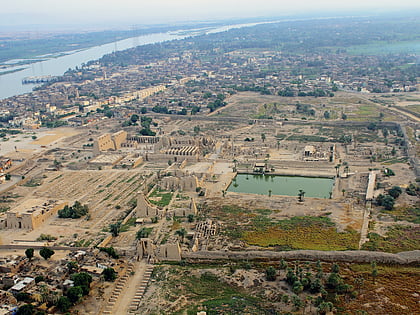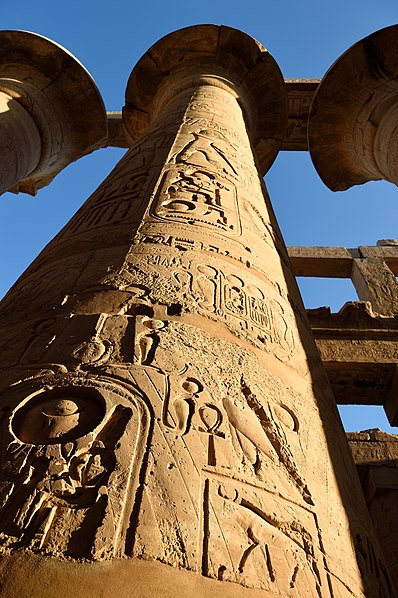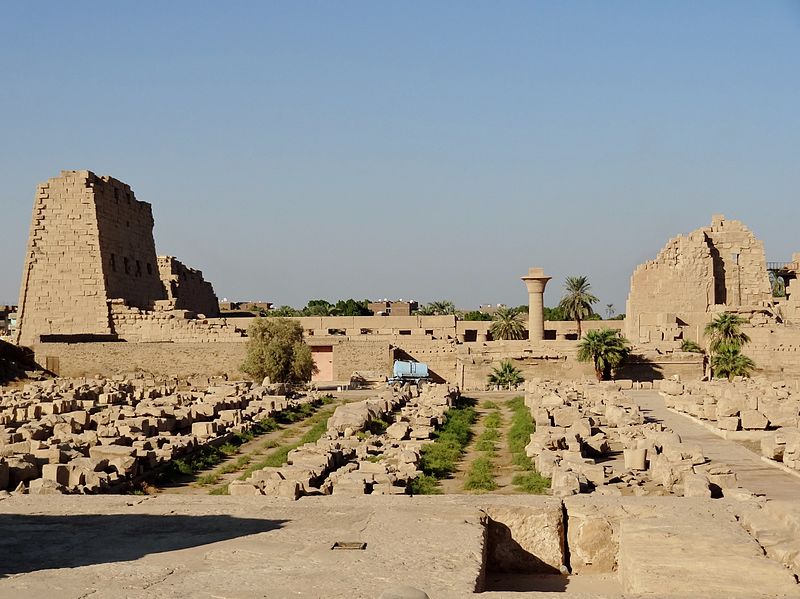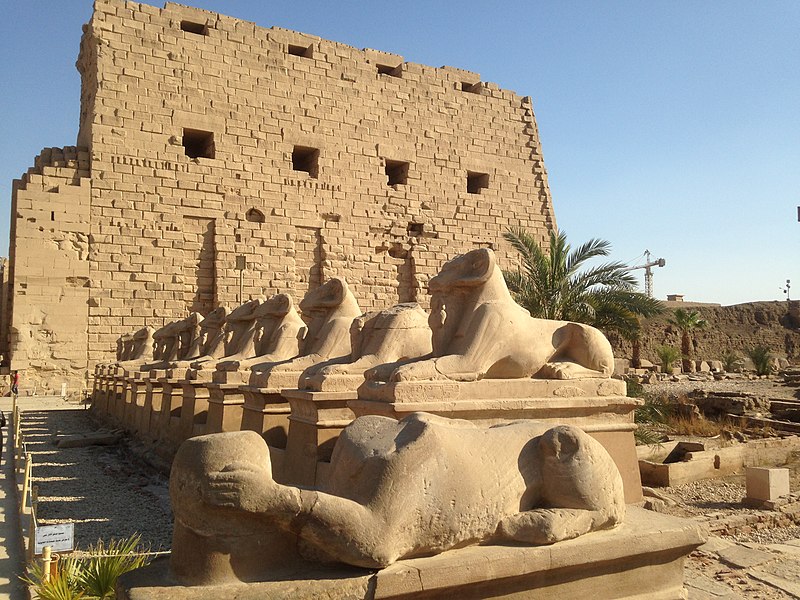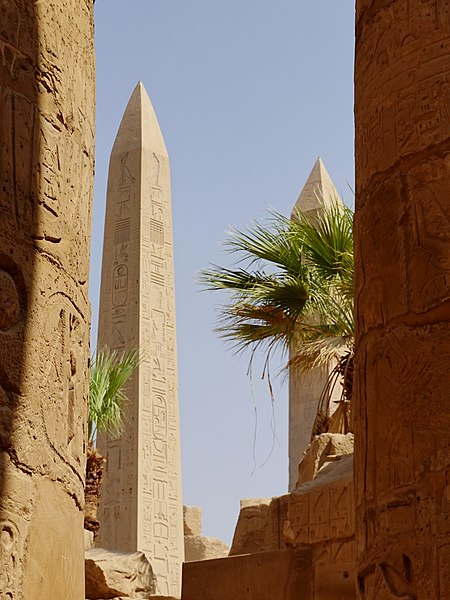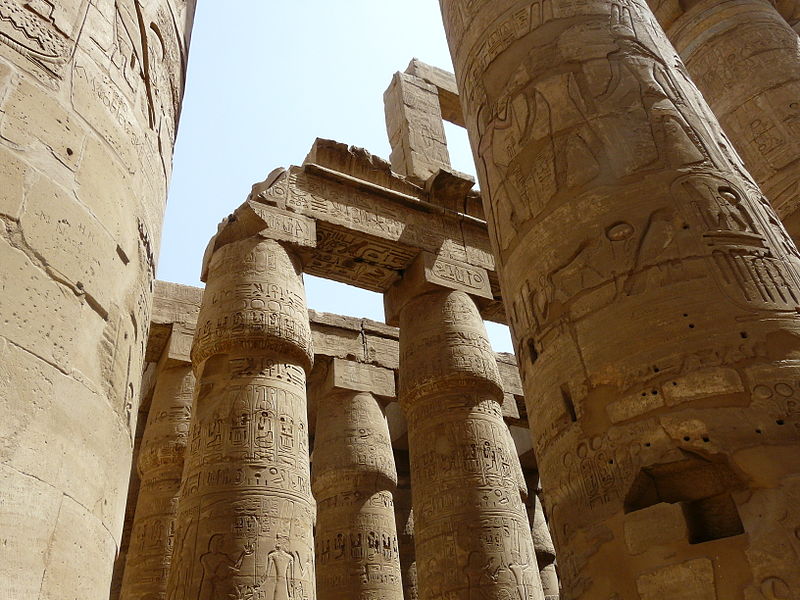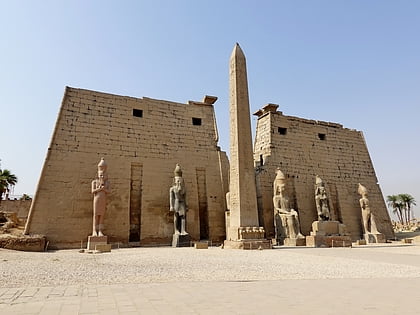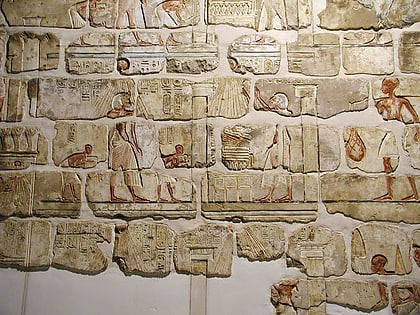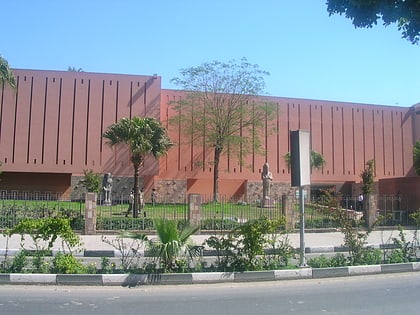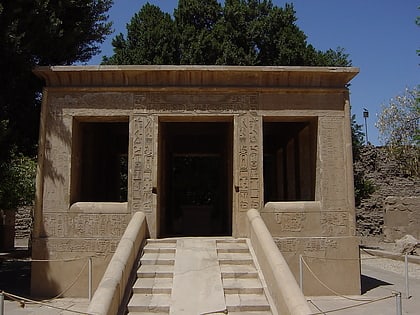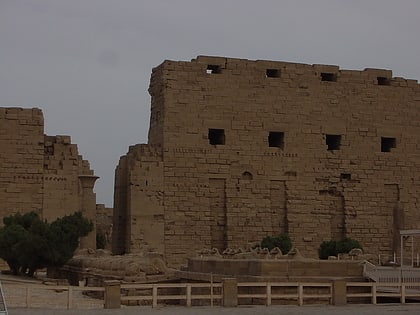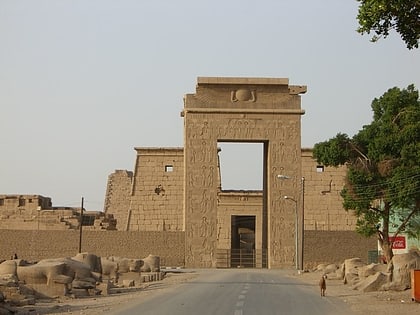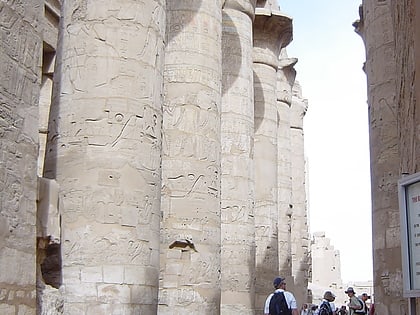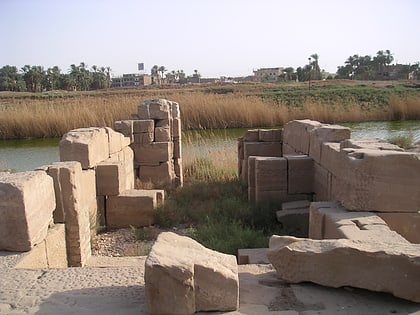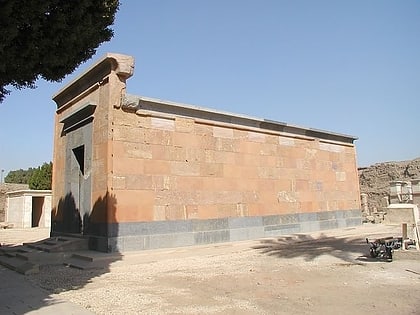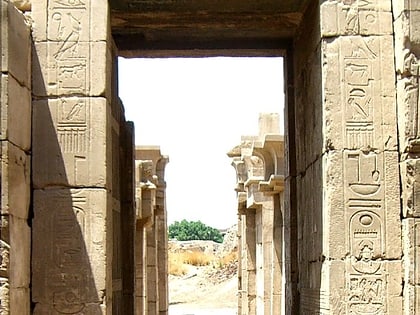Karnak, Luxor
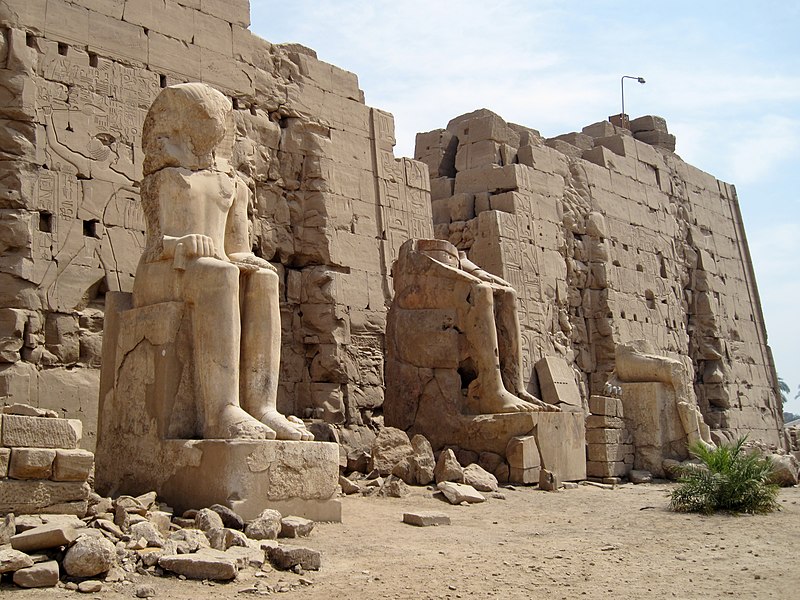
Facts and practical information
Karnak, a breathtaking ancient temple complex located in the city of Luxor, Egypt, stands as a testament to the grandeur of the Pharaohs and the architectural prowess of the ancient Egyptians. This vast open-air museum, which spans over 100 hectares, is the second-largest religious site in the world, only after the Angkor Wat Temple in Cambodia.
A place of pilgrimage for over 4,000 years, Karnak is dedicated to the Theban triad of Amun, Mut, and Khonsu. The site's main feature is the Temple of Amun-Ra, one of the world's largest religious buildings. The complex is a dazzling array of sanctuaries, kiosks, pylons, and obelisks, all interconnected by a labyrinth of processional pathways.
The Great Hypostyle Hall, a forest of gigantic columns, is one of Karnak's most awe-inspiring features. It boasts 134 columns, each standing at 23 meters high. The hall was designed to represent the primeval papyrus swamp of creation, a place where the earliest gods were believed to have emerged.
Karnak's construction spanned over two millennia, with each Egyptian ruler adding their own contribution to the complex, resulting in an eclectic mix of architectural styles. The site's most significant structures date from the 12th to the 20th dynasties, making it a treasure trove for archaeologists and historians alike.
The temple complex is also known for the Karnak Sound and Light Show, which illuminates the structures at night and narrates the history of Thebes and the lives of the pharaohs.
Karnak – popular in the area (distance from the attraction)
Nearby attractions include: Luxor Temple, Temple of Amenhotep IV, Luxor Museum, Karnak Open Air Museum.
Frequently Asked Questions (FAQ)
Which popular attractions are close to Karnak?
How to get to Karnak by public transport?
Bus
- City bus station (25 min walk)
- Local bus station (27 min walk)
